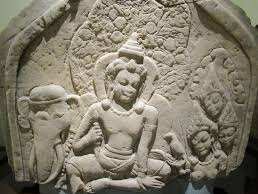Pierre Dupont’s L’archéologie mône de Dvāravatī and Its English Translation | and the Translator's Response
by Nicolas Revire
Critical assessment of the English translation by Joyanto K. Sen of a classical study, and the translator's response.

- Publication
- Journal of The Siam Society, Vol. 99, pp 96–225 | Journal of The Siam Society, Vol. 101, pp 251-252 (2013)
- Published
- 2011
- Author
- Nicolas Revire
- Pages
- 1
- Language
- English
pdf 462.1 KB
This controversy around the translation of Pierre Dupont’s essay on the Mon archaeology of the Dvaravati arises several questions of note for passionate researchers of Angkor and Southeast Asia, in particular:
- as so many works from French academics and researchers, Dupont’s book (based on his PhD thesis (1953) and published after his sudden death two years later) had become hard to find, hence the importance of an English translation, published 50 years after his passing;
- a belated translation is often prone to ‘modernize’ and ‘update’ the lexicon and references used in the source book, and this is the main critic Nicolas Revire rises here against the translator, who responded some two years earlier in the columns of the same Journal of The Siam Society (here is Joyanto K. Sen’s response);
- translating a modern essay dealing with ancient civilizations in which translation was often an exercise in ‘cultural adaptation’ – from Sanskrit to Pali, from both of these languages into local idioms — seems extraordinarily difficult, and yet necessary. In their ‘Translation as Commentary in the Sanskrit-Old, Javanese Didactic and Religious Literature from Java and Bali’, Andrea Acri and Thomas M. Hunter* show how translating was, in those times and in this part of the world, essentially “a commentary involving multiple processes simultaneously: first, the translation from an Indo-European language into a local idiom, and second, the exegesis (or reconfiguration) of Indic material and its refitting into a familiar/known cultural context”;
- adding new maps, plates and photographs to the source text, as it happened for this English translation published in 2006 (White Lotus Press), might be justified when posterior discoveries have happened since its publication;
- in any case, the controversy brings us to discover or rediscover Pierre Dupont’s major contribution to the study of Ancient Southeast Asian, in this case the Mon (or Indic-Mon) culture that strived before the development of Tai kingdoms.
* Published in Medieval Worlds, n. 11, 2020, pp 213 – 240.
Photo: The Kulavaka Jataka Boundary Marker (Khon Kaen National Museum, Thailand)
About the Author

Nicolas Revire
A specialist in Southeast Asian Buddhism, Early Art and Archaeology studies, Nicolas Revire is post-doctoral research fellowship at the Art Institute of Chicago since early 2023, after lecturing at the Faculty of Liberal Arts, Thammasat University, Thailand, and being a guest lecturer at Mahachulalongkorn Buddhist University, Bangkok, for more than 20 years.
With a research focus on Buddhist iconography and Dvāravatī with special focus on Thailand, Myanmar and Cambodia, Nicolas Revire has contributed several articles and reviews in the Journal of the Siam Society and other academic publications, and translated numerous scholarly publications from Thai and English into French.
He edited (with Stephen A. Murphy) Before Siam: Essays in Art and Archaeology (2014).

